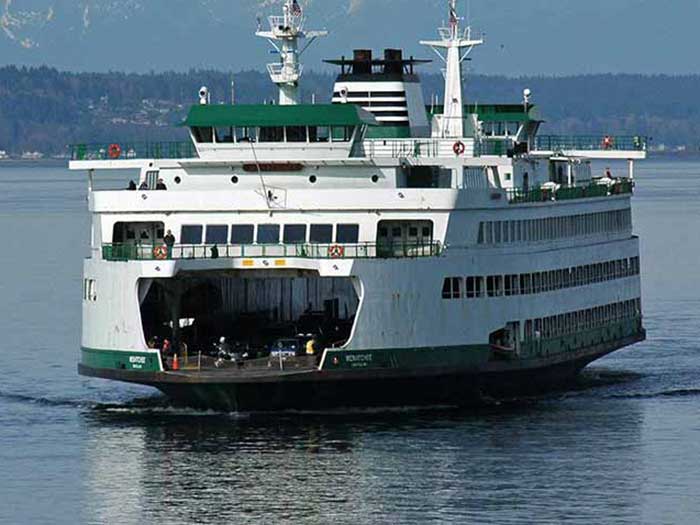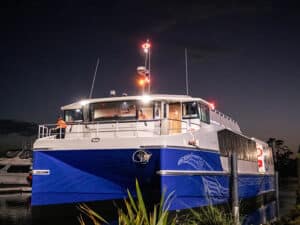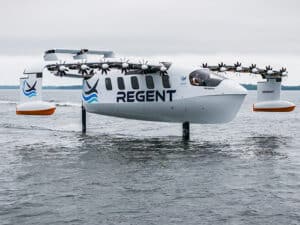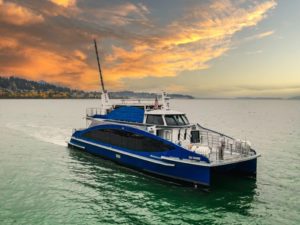
WSF: 2022 ferry ridership up slightly from 2021
Written by Marine Log Staff
Photo: Washington State Ferries
Washington State Ferries (WSF) reports that it carried 17.4 million riders in 2022, a total ridership increase of roughly 100,000 – or 0.5% – over 2021. The rise in annual ridership was fueled by a strong increase in walk-on passengers as tourism and in-person work rebounded from the COVID-19 pandemic.
Ridership was still below 2019 pre-COVID levels, with the overall 2022 figure rising to roughly 73% of 2019 numbers, with vehicles at 82% and walk-on customers up to 49% of pre-pandemic levels.
After two years of vehicles outnumbering passengers for the only time in its history, WSF returned to carrying more passengers (8.8 million) than vehicles (8.6 million) last year. Passengers are both walk-on riders as well as anyone in a vehicle in addition to the vehicle driver.
Walk-on passengers increased by 500,000 – or 17.8%. Overall ridership growth was more modest as the number of vehicles carried dipped a bit, WSF says that this is possibly because new travel patterns are emerging even as pandemic restrictions have lessened.
Since late 2021, WSF has been working to restore service (PDF 794KB) to pre-pandemic levels on a route-by-route basis.
“While it is difficult to forecast trends in the still-evolving ‘new normal,’ ridership is expected to steadily increase in the years ahead,” says WSF.
“Following the successful restoration of our Anacortes/San Juan Islands, Seattle/Bainbridge and Mukilteo/Clinton routes in 2022, we kicked off the new year by moving our Edmonds/Kingston run to a trial of two-boat pre-pandemic service levels,” said Patty Rubstello, head of WSF. “We plan to restore our Fauntleroy/Vashon/Southworth route early this year, but the timing of full restoration on our Seattle/Bremerton and Port Townsend/Coupeville runs remains dependent on the number of captains and mates who complete training in spring 2023.”
HIGHLIGHTS
The greatest year-to-year increase came on the Seattle/Bainbridge Island route, where total ridership – vehicles and passengers combined – was up 19%. The run was the system’s busiest in 2022 with 4.4 million riders, followed by Mukilteo/Clinton with 3.4 million and Edmonds/Kingston with 3.1 million. System highlights include:
- Seattle/Bainbridge Island: System-high year-to-year jump in vehicles of 13%, walk-ons surged a system high of 31%.
- Mukilteo/Clinton: Total riders down 3%; vehicles decreased 4% (remains busiest route for drivers), walk-ons grew 19%.
- Edmonds/Kingston: Total riders dropped 12%; vehicles declined 16%, walk-ons climbed 11%.
- Fauntleroy/Vashon/Southworth: Total riders down 2% from 2021; vehicles decreased 3%, walk-ons jumped 15%.
- Anacortes/San Juan Islands: Total riders dropped 2%; vehicles declined 1%, walk-ons remained nearly flat.
- Seattle/Bremerton: Total riders down 7%; vehicles decreased 12%, walk-ons grew 4%.
- Point Defiance/Tahlequah: Year-to-year total riders up 3%; vehicles increased 3%, walk-ons surged 16%.
- Port Townsend/Coupeville: Total riders rose 2%; vehicles grew 2%, walk-ons jumped 7%.
- Anacortes/Friday Harbor/Sidney, British Columbia: The international route did not resume service in 2022 due continued crewing and vessel availability challenges.




